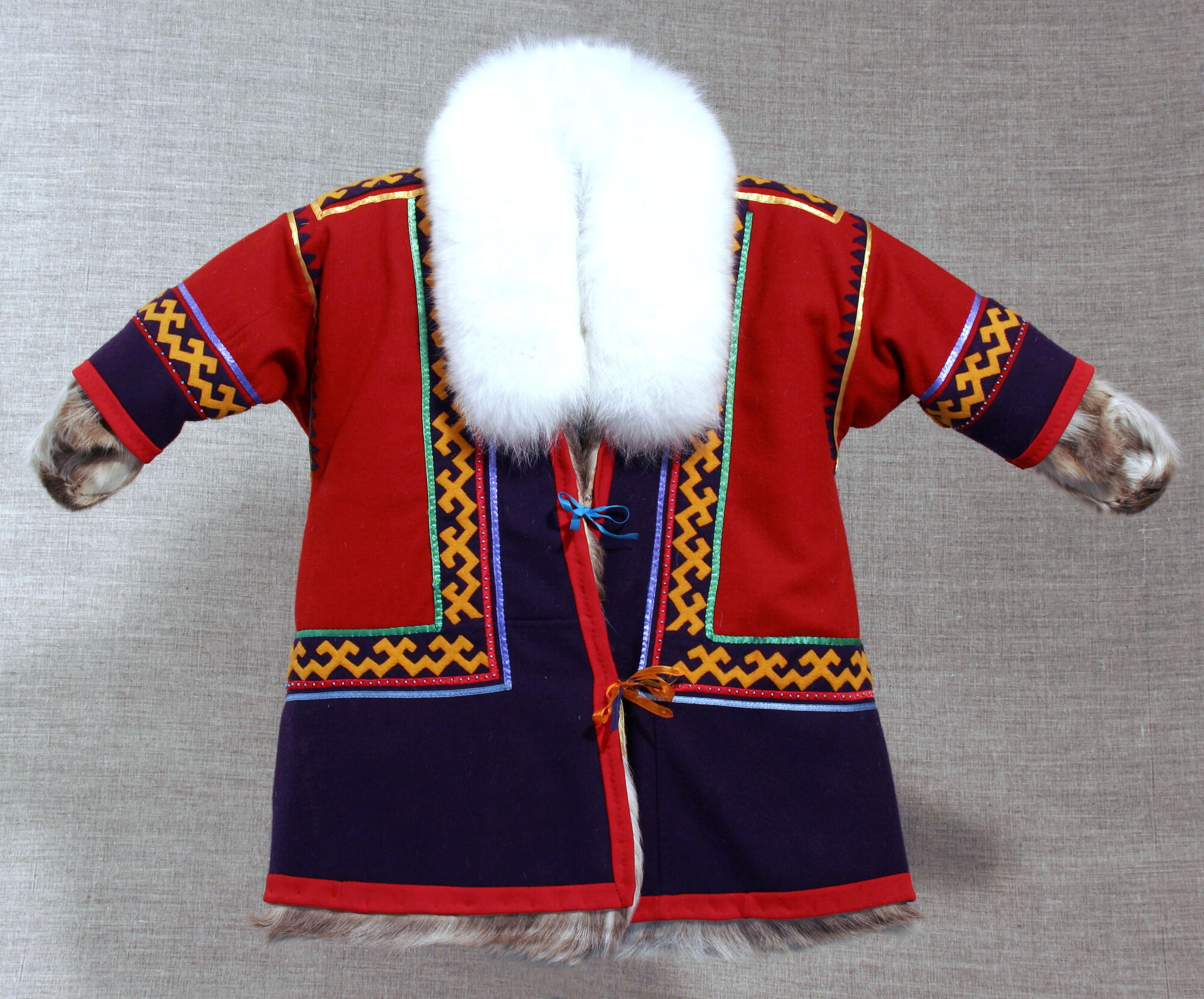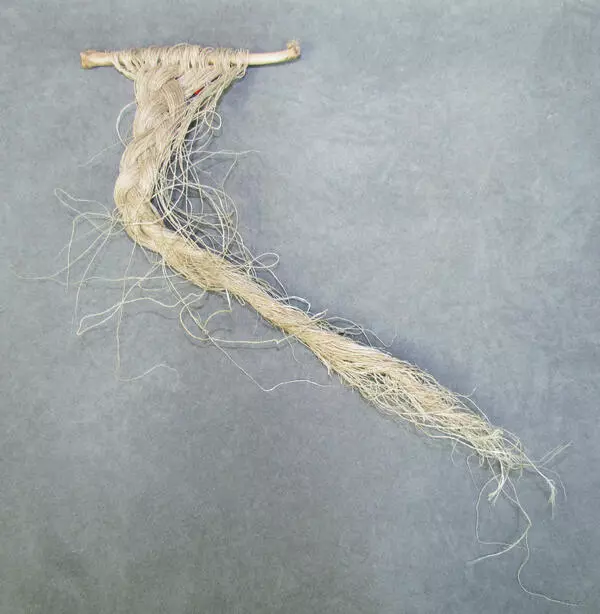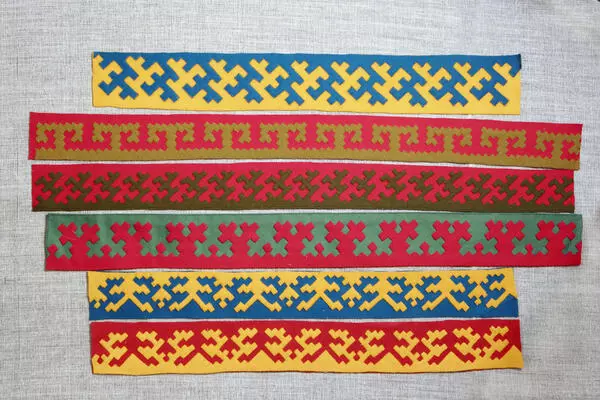The Forest NEnets people live in harsh climate and they traditionally wear clothing made of reindeer skins and fur, as it keeps the warmth even during the severest frosts. Clothes for children differs depending on the gender of a child and his or her age. Before a baby can walk, it stays in a cradle. From one year to four or five years boys and girls wear the same clothes. A fur garment with a hood and sewn up mittens is made for them. Its design reminds of an adult version of a coat. Often there are tiny bells attached to the bottom part of the sleeves. They had a sacred meaning in the past, the NEnets believed the bells protected from evil spirits. Nowadays it is more for a practical reason: when a child is playing outside, his mother can always tell by the sound where he is. From the age of four or five years, children start wearing gender-related clothes: boys get their fur mAlitsas, girls have yagUshkas.
A girl’s yagUshka is a traditional double fur coat broadening to the bottom. Unlike a done-up male mAlitsa, a yagUushka is slitted in the front. It reminds of adult women’s garment, but a version for children is decorated less exquisitely with colorful cloth or light and dark kamus (reindeer legs skin) ornaments. The collar is made of blue or red fox fur. Cloth or suede laces are sewn to the lapels.
Traditionally reindeer tendon threads are used for sewing it as they are much stronger than manufactured ones. To make the coat warmer, there are as little seams as possible. To tighten the seams, a narrow strip of cloth or long reindeer neck hair is placed between the edges. Mittens are sewn up to the sleeves with a slot left so that one could pull out the hands. Fur coats are tied up with a smart belt made of cloth and decorated by a traditional glass beads ornament.
Gubkinsky Museum of the Development of the North displays the fur yagushka covered with colorful cloth with a blue fox collar. It was provided to the fund by the Forest Nenets Fedosiya Vyllo, a Muravlenko town resident.
A girl’s yagUshka is a traditional double fur coat broadening to the bottom. Unlike a done-up male mAlitsa, a yagUushka is slitted in the front. It reminds of adult women’s garment, but a version for children is decorated less exquisitely with colorful cloth or light and dark kamus (reindeer legs skin) ornaments. The collar is made of blue or red fox fur. Cloth or suede laces are sewn to the lapels.
Traditionally reindeer tendon threads are used for sewing it as they are much stronger than manufactured ones. To make the coat warmer, there are as little seams as possible. To tighten the seams, a narrow strip of cloth or long reindeer neck hair is placed between the edges. Mittens are sewn up to the sleeves with a slot left so that one could pull out the hands. Fur coats are tied up with a smart belt made of cloth and decorated by a traditional glass beads ornament.
Gubkinsky Museum of the Development of the North displays the fur yagushka covered with colorful cloth with a blue fox collar. It was provided to the fund by the Forest Nenets Fedosiya Vyllo, a Muravlenko town resident.





